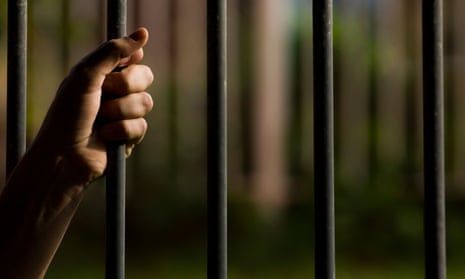By the time Marvin Aguillard received his first dose of HIV medication, his body had developed antiretroviral resistance, a common side-effect of spotty treatment.
He was in jail for seven months, unable to hold down food. But it wasn’t until he was released, 20-30 pounds lighter than his regular weight, that he saw a doctor.
“Going 40-plus days without your medication, then your body becomes resistant, and you’re getting sick and stuff like that – it takes a toll on you,” Aguillard said. “My body broke down.”
Aguillard is at the intersection of two of Louisiana’s great problems: incarceration and HIV. The state has the world’s highest incarceration rate, and the nation’s highest HIV rate.
And in its jails, the state has systematically failed to provide HIV services and testing to inmates, potentially in violation of international human rights treaties, Human Rights Watch has found.
“Louisiana is basically ground zero to both epidemics in the US, which is HIV and incarceration,” said Megan McLemore, a senior researcher at Human Rights Watch. “We wanted to look at the people who were caught at this overlap, in this intersection, because it’s very much the same people who are high risk.”
The report by Human Rights Watch argues that the state avoids testing inmates at local “parish” jails, the equivalent of counties, to avoid providing costly HIV treatment in state prisons. Even when treatment is provided, the report called it “limited, haphazard and in many cases nonexistent”.
McLemore added that the failure to test and treat inmates affects the entire community because “whoever goes into jail comes back out”.
HRW workers described HIV care that was almost entirely dependent on federal monies, and said some parish workers were reticent to test for HIV, because local jails didn’t have the money to pay for care.
“The surprising part to me was there just seemed to be no state focus, even at the office of public health, on the parish jails,” said McLemore. “There are also 15,000 prisoners, at least, that are state prisoners that are in the parish jails who don’t have access to services that their counterparts do in the prison system.”
Louisiana itself has the highest rate of new HIV diagnoses in the country for any state, at 36.6 persons diagnosed with the disease for every 100,000 living in the state. The state is second to Washington DC, which has a diagnosis rate nearly double that, at 66.9 diagnoses per 100,000 people.
But Louisiana also tops the world with its incarceration rate of 816 people incarcerated for every 100,000 adults in the state, according to the National Institute of Corrections. The national average in the US is 392 persons per 100,000. Louisiana’s incarceration rate tops countries such as Turkmenistan (with a rate of 583 per 100,000) and Russia (with 442 per 100,000), according to the World Prison Brief.
The sheer volume of the prison population that Louisiana supports has pushed the state to be even more frugal with its incarceration system – as of 2012 the state also spent the least money per inmate, at $24.39 per day.
In the south, Louisiana is not unique. States in the south-eastern US bear a disproportionate burden of HIV cases, representing 44% of all people living with the disease, but 37% of the US population. One of its nearest neighbors, Florida, has the second highest HIV diagnosis rate of any state in the country, at 31.3 people per 100,000, according to the Kaiser Family Foundation.
Because of a court decision in the 1970s regarding overcrowding in Louisiana jails, the state has developed an unusual two-tiered corrections system, with state funded prisons and locally funded parish jails. Inmates can be housed in both state or local jails, though corrections officials told HRW they attempt to keep violent offenders in state prisons. A Louisiana department of corrections representative did not return a call for comment.
But despite fluid housing for prisoners, just five of 104 parish jails offer HIV tests, while all state facilities provide testing. And few local jails provide sufficient HIV treatment, Human Rights Watch said in its report.
Parish facilities, which house about half of Louisiana’s 30,000 inmates, don’t test for HIV, have few links to outside services, and former inmates interviewed described haphazard treatment regimens. State facilities, McLemore said, have “adequate” HIV testing, care and linkage to outside clinics.
Human Rights Watch interviewed more than 100 people, including workers in not-for-profit medicine, the criminal justice system, and 27 former inmates. The report recommends continuing to reducing mandatory minimum sentences, testing for all inmates who enter parish jails for HIV, and transferring those with HIV to state prisons with “adequate” services.
As of 2012, the Louisiana sentencing commission found more than 60% of jail admissions were because of mandatory minimum sentencing requirements. Statewide, non-violent drug crimes account for more than 36% of inmates housed in local jails, and 13.8% of people in state prisons.

Comments (…)
Sign in or create your Guardian account to join the discussion